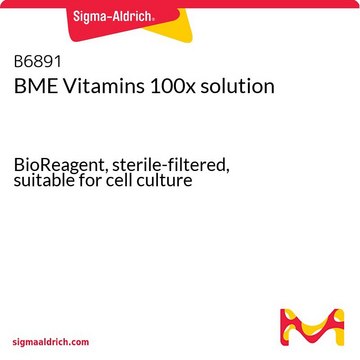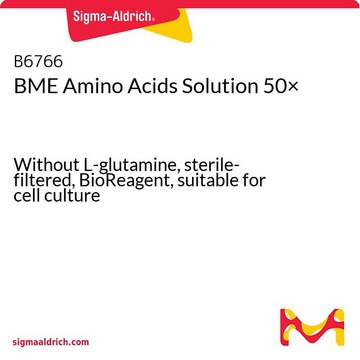R7256
RPMI 1640 Vitamins Solution (100×)
liquid, sterile-filtered, BioReagent, suitable for cell culture
Synonym(s):
RPMI 1640 Solution, RPMI 1640 Vitamins, Vitamins Solution
About This Item
Recommended Products
sterility
sterile-filtered
product line
BioReagent
form
liquid
technique(s)
cell culture | mammalian: suitable
impurities
endotoxin, tested
color
yellow to dark yellow
pH
7.2-7.6
shipped in
dry ice
storage temp.
−20°C
General description
Application
- in the preparation of CeM1 medium for the isolation of Caenorhabditis elegans germ cells
- as a component of the amino-acid-deprived medium for the starvation of intestinal porcine enterocytes
- as a component of the stage-8 medium for culturing of human pluripotent stem cell-derived 3D pancreatic progenitor clusters
Storage Class Code
10 - Combustible liquids
WGK
WGK 3
Flash Point(F)
Not applicable
Flash Point(C)
Not applicable
Regulatory Listings
Regulatory Listings are mainly provided for chemical products. Only limited information can be provided here for non-chemical products. No entry means none of the components are listed. It is the user’s obligation to ensure the safe and legal use of the product.
JAN Code
CR40333-500ML:
R7256-BULK:
R7256-PH:
R7256-100ML:
R7256-VAR:
R7256PROC:
CR40333-1L:
R7256-500ML:
Choose from one of the most recent versions:
Already Own This Product?
Find documentation for the products that you have recently purchased in the Document Library.
Customers Also Viewed
Our team of scientists has experience in all areas of research including Life Science, Material Science, Chemical Synthesis, Chromatography, Analytical and many others.
Contact Technical Service











